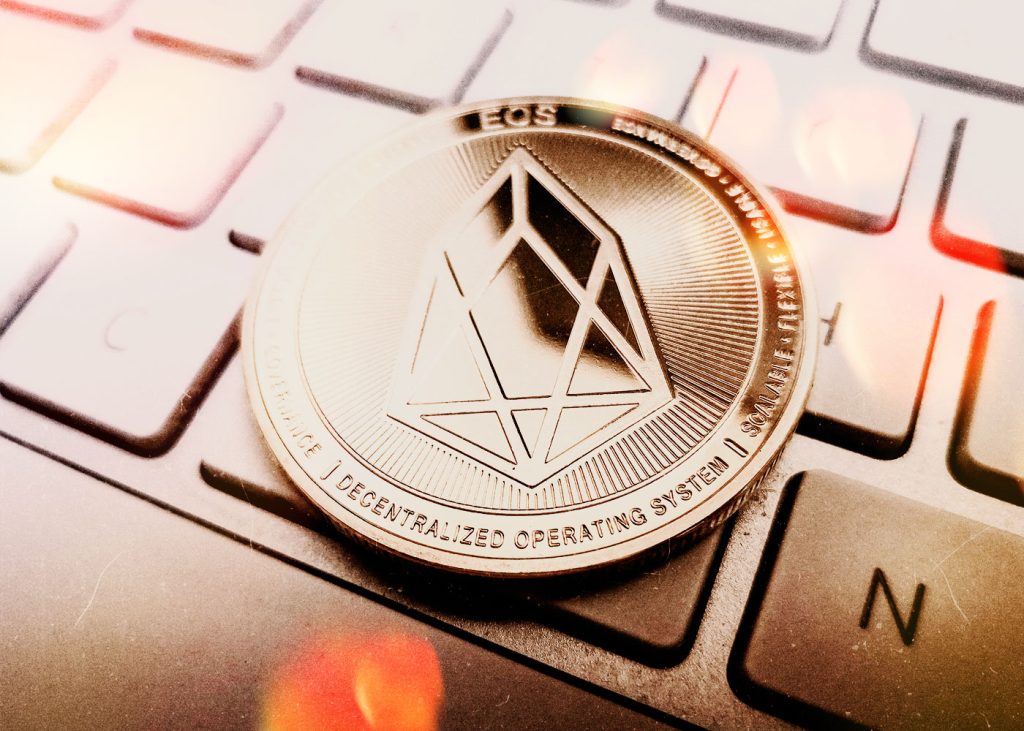EOS is a popular blockchain platform that enables developers to build decentralized applications. One of the unique features of EOS is its staking system, which allows users to earn rewards for participating in the network. In this article, we’ll explore how to stake EOS and earn rewards in 2023.
We’ll cover the basics of EOS staking, the benefits of staking, and how to stake it right. Whether you’re a seasoned cryptocurrency investor or a newcomer to the space, this guide will provide you with everything you need to know to get started with EOS staking.
What is EOS?
EOS is a blockchain platform that provides developers with a flexible and scalable environment to build decentralized applications. By utilizing a delegated proof-of-stake consensus mechanism, EOS can process transactions quickly and with high throughput. The platform’s unique token distribution model allows users to stake tokens to access network resources, such as CPU, bandwidth, and RAM. Additionally, EOS provides developers with a smart contract platform that supports several programming languages and is interoperable with other blockchain platforms, enabling cross-chain application development.
The EOS ecosystem is collaborative and inclusive, with developers and users working together to create innovative solutions and applications. The platform’s versatility is demonstrated by the wide range of dApps built on it, including social media platforms, gaming platforms, and decentralized exchanges. Overall, EOS has the potential to drive innovation and disrupt traditional industries.

EOS Tokenomics
The EOS blockchain’s native cryptocurrency is the EOS token, which plays a vital role in the platform’s tokenomics. EOS is utilized for resource allocation, voting for block producers, and participating in the platform’s governance. EOS’s resource allocation system is one of its distinctive features. PowerUp completely replaced the previous staking model and REX approach on April 8th, 2021.
The voting system is another essential aspect of EOS‘s tokenomics. EOS token holders may vote for block producers who process transactions and maintain the network. Token holders elect the top 21 block producers based on the number of votes they receive. This system encourages transparency, accountability, and competition among block producers, ensuring the platform’s security and stability.
In summary, EOS tokenomics is intended to incentivize long-term token holding, foster transparency and accountability among block producers, and encourage community participation in the platform’s governance. These features contribute to the EOS blockchain ecosystem’s stability and success.
How does Votin Work on EOS?
Let’s take a closer look at how voting works in the EOS ecosystem. Currently, Block Producers receive 1% of the inflation per year for block production, and they often reward their voters with 80% of that 1% inflation. The remaining 20% is kept by the Block Producers to cover their infrastructure costs. By voting for a Block Producer or proxy, you can earn up to 4% APY. Some popular platforms for voting include Anchor Wallet, bloks.io, genpool.io, eosx.io, and eosauthority.com.
It’s important to note that in order to earn rewards from voting, you must specifically vote for a proxy that offers rewards, such as ‘everstakeone.’ While voting for Block Producers helps maintain their level of service and supports the EOS ecosystem, it doesn’t provide you with rewards. Nonetheless, voting for Block Producers is highly encouraged.
Voting plays a crucial role in aligning the interests of token holders, developers, and network operators, which ultimately promotes innovation. It prioritizes network security, encourages constructive participation, and promotes transparency. Block Producers contribute to the EOS Public Blockchain ecosystem and support community programs and initiatives. For more information on AtticLab BP, you can refer to the EOS Block Producer Research Portal.
What is Important for Staking EOS?
The amount of EOS you have staked determines your voting power. Only staked tokens count towards your voting power when voting for Block Producers. In summary, if you want to vote and earn returns, stake EOS! Otherwise, power up your account for transactions. There are various web resources available to vote for Block Producers or proxies and earn rewards. You can also use the Anchor wallet for staking/voting. However, in this guide, we will focus on one method for staking and voting.
We recommend using bloks.io in conjunction with the Wombat Wallet for its user-friendly interface and simplicity of the process. Please note that in order to earn rewards by voting, you must vote for a proxy that offers rewards, such as “everstakeone.” Although voting for Block Producers helps maintain their level of service and supports the EOS ecosystem, it does not provide rewards. Nevertheless, voting for Block Producers is highly encouraged.
Conclusion
In conclusion, EOS staking is not only a way to participate in the governance of the EOS blockchain but also an opportunity to earn rewards through voting for block producers or rewards proxies. By staking EOS tokens, you can contribute to the security and stability of the network while earning up to 4% APY. With the help of various web resources and wallets, staking and voting have become an easy process. If you’re looking for a way to earn passive income and support a decentralized ecosystem, staking EOS is definitely worth considering in 2023.
